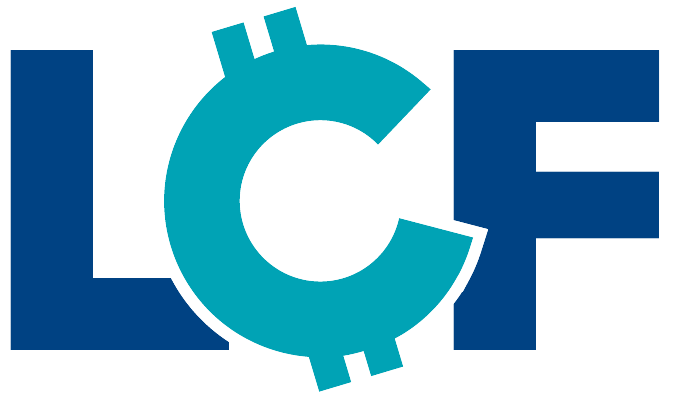The Costs of Starting a Retail Store
Lets Get Started
Starting a retail store as your new business can be an exciting and rewarding venture for aspiring small business owners. However, understanding the costs of opening a retail store is crucial for success. In this blog post, we will discuss the various costs you’ll need to consider when starting a retail store and financing options to help you cover these expenses.
Initial Startup Costs for a Retail Store
Starting your own business isn’t free. Just to start even a small retail store, you’ll need to find funding as there are many costs.
Location and Monthly Rent: Your retail store’s location is critical to your success (unless you’re operating an online store). You’ll need to choose a retail space that offers high foot traffic and is easily accessible to your target customers. The average cost of the monthly rent will depend on factors such as location and real estate market conditions. You’ll also likely pay per square foot. Remember to factor in costs for utilities, property insurance, and any necessary renovations to make the space suitable for your business.
Naming Costs: Naming your business can involve trademark searches and registration fees to protect your business name from being used by other companies. These costs can vary depending on the jurisdiction, but budgeting them to secure your brand’s intellectual property is essential. Additionally, registering your business name with the secretary of state or other relevant government bodies may require a registration fee, ranging from $50 to $150, depending on the state.
Website Setup: Setting up a website is the next step once you have chosen and registered your business name. You must purchase a domain name, typically costing between $10 and $50 per year. While some online store platforms, like Shopify or BigCommerce, include a domain name in their monthly plans, others may require you to purchase one separately.
Aside from the domain name, creating and hosting your website involves additional expenses. Web hosting can range from a few dollars per month for shared hosting to hundreds of dollars per month for dedicated servers or managed hosting plans. If you choose to use an e-commerce platform or website builder, you may also need to pay a monthly subscription fee, ranging from $10 to $300, depending on the provider and plan.
Inventory costs are a significant aspect of starting and operating a retail store. Proper management of inventory costs is crucial to ensure a healthy cash flow and maximize profitability. When considering inventory costs, business owners should take into account several factors:
Cost of Goods Sold (COGS): COGS refers to the direct cost of acquiring or producing the products you resale in your retail store. This includes the cost of purchasing products from suppliers or manufacturers, raw materials for production, and any other direct expenses related to creating the products. COGS is a primary component of your inventory costs and should be accurately calculated to determine your store’s profitability.
Shipping and Freight Costs: Depending on your suppliers or manufacturers, you may need to cover shipping and freight costs when ordering inventory. These costs can vary depending on factors such as distance, shipping method, and order size. It is essential to factor these expenses into your overall inventory costs, as they can significantly impact your profit margins.
Storage and Warehousing: Depending on the size of your retail store and the type of products you sell, you may need additional storage space for your inventory. This can involve leasing warehouse space or purchasing shelving and storage equipment for your retail location. The costs of storage and warehousing should be included in your inventory expenses.
Inventory Management and Tracking: Proper inventory management is critical for retail businesses to prevent stockouts and overstocking. This may require investing in inventory management software or point-of-sale systems that include inventory tracking features. The cost of implementing and maintaining these systems should be factored into your overall inventory costs.
Losses and Shrinkage: Retail businesses often experience losses due to theft, damage, or spoilage of products. This is known as shrinkage, and it contributes to your inventory costs. Implementing loss prevention measures, such as security cameras, proper employee training, and inventory audits, can help reduce shrinkage, but it is essential to account for potential losses when calculating your inventory costs.
Seasonal and Market Fluctuations: Depending on the products you sell, you may experience fluctuations in demand due to seasonal trends or market conditions. This can impact your inventory costs, as you may need to order larger quantities during peak seasons or adjust your product offerings to respond to market trends. Be prepared to adapt your inventory management strategies and budget to accommodate these fluctuations.
Visual Merchandising, Signage, and Store Setup: Your retail store will require shelving, display units, mannequins, and signage to showcase your products and attract customers. The cost of these items can vary depending on the size of your store, the type of items you choose, and the materials used for signage.
On top of that, there are plenty of in-store expenses, from furniture, storefront displays, and other equipment used to show off your product line.
Point of Sale (POS) System: A reliable POS system is essential for managing sales transactions, tracking inventory, and processing credit card payments. The cost of a POS system can vary, but you’ll need to budget for the hardware, software, and payment processing fees associated with your chosen system.
Operating Expenses: Operating expenses include employee wages, insurance, and marketing costs. As a business owner, you’ll need to obtain a business license, business insurance, liability insurance, and workers’ compensation insurance to protect your business and employees. Additionally, marketing costs can include expenses for social media advertising, business cards, and grand opening events.
Financing Your Retail Store
Securing the necessary funds is crucial when starting all types of businesses to cover expenses like inventory, equipment, and operational costs. Business owners have several financing options available to them, each with its own benefits. Here are some popular financing options for retail businesses:
Merchant Cash Advance: While they’re not loans, merchant cash advances are a financing option where a business owner receives a lump sum of cash upfront in exchange for a percentage of future revenue. This financing option is ideal for retail businesses with strong credit card sales, as repayment is tied directly to sales volume. MCAs are also often available to businesses with a short time in operation.
Small Business Loans: SBA, banks, credit unions, and other lenders offer traditional small business loans. These loans can provide a large amount of funding with relatively low interest rates. However, they may require a strong personal credit score, an extensive business plan, and collateral.
Business Line of Credit: A business line of credit is a flexible financing option allowing retail store owners to access funds up to a predetermined credit limit as needed. Interest is charged on the amount borrowed. Many small businesses find it to be more challenging to qualify for a line of credit compared to a traditional loan, and interest rates can be higher.
Crowdfunding: Crowdfunding platforms like Kickstarter and Indiegogo allow retail store owners to raise funds by pitching their business idea to potential backers. This financing option allows businesses to secure funding without incurring debt or giving up equity. However, crowdfunding campaigns require significant marketing efforts and may not guarantee the desired funding level.
Angel Investors and Venture Capitalists: Angel investors and venture capitalists fund businesses in exchange for equity or ownership stakes. This financing option can provide retail stores with significant capital to cover startup costs and support growth. However, it may require giving up partial business control (meaning you are no longer the boss) and sharing profits with investors.
Final Thoughts
In conclusion, entrepreneurs need to understand that starting a retail store involves various costs, including location expenses, inventory, shelving and signage, POS systems, and operating costs. By recognizing and planning for these costs and exploring financing options, you can set your retail store on the path to success. Remember to create a detailed business plan outlining your expenses and revenue projections, and be prepared to adapt as your business grows.
This material has been prepared for informational purposes only, and is not intended to provide, and should not be relied on for, tax, legal or accounting advice. You should consult your own tax, legal and accounting advisors before engaging in any transaction.




